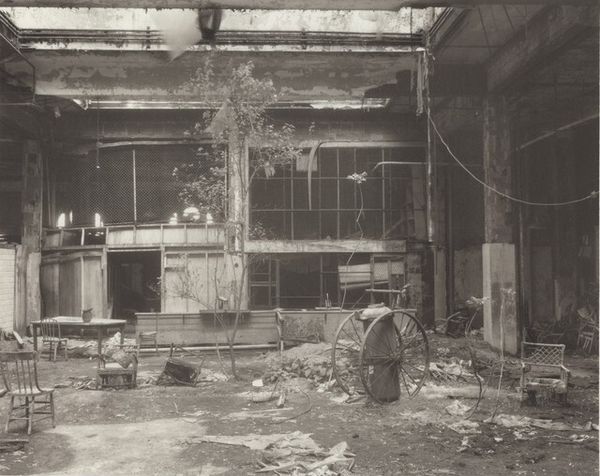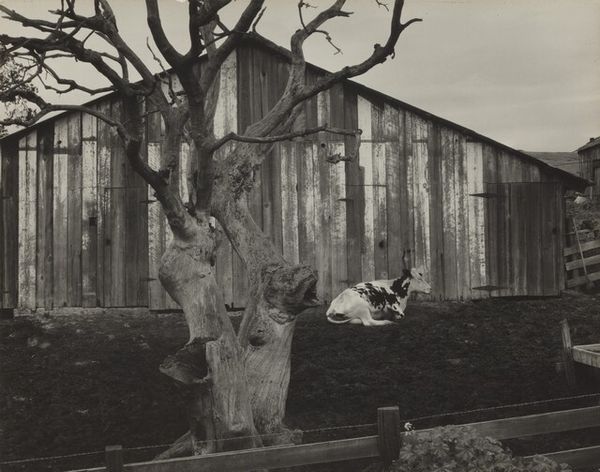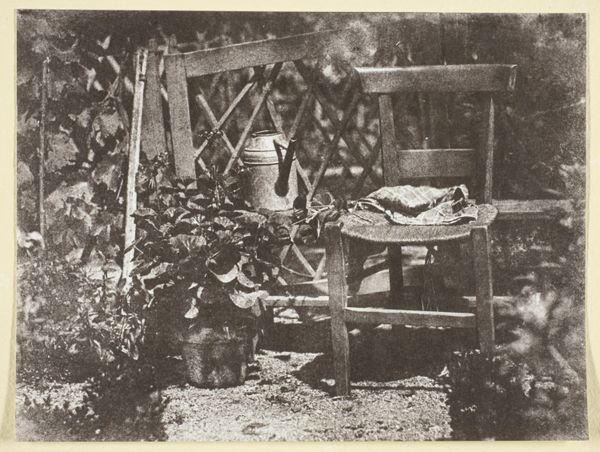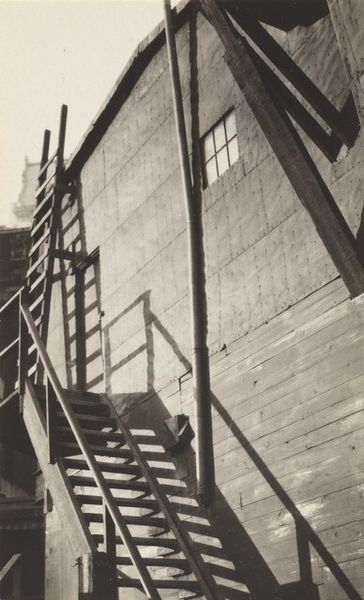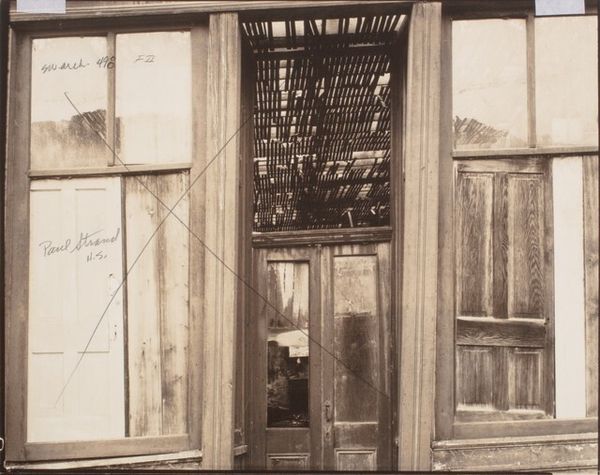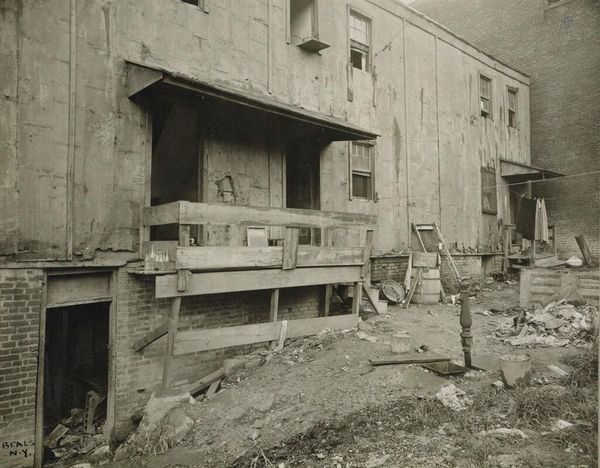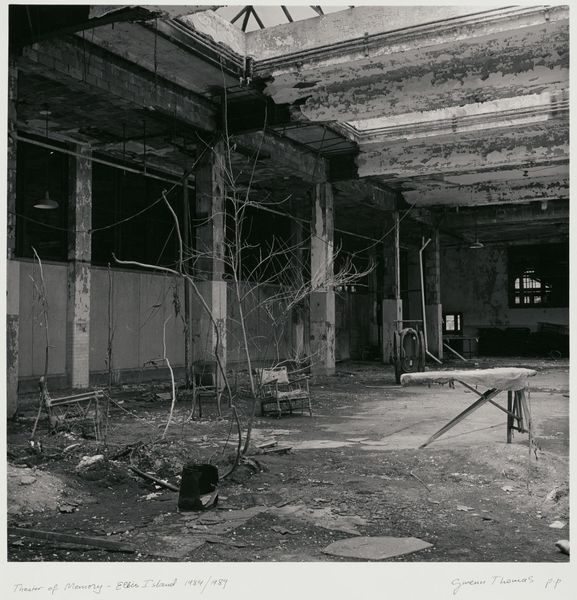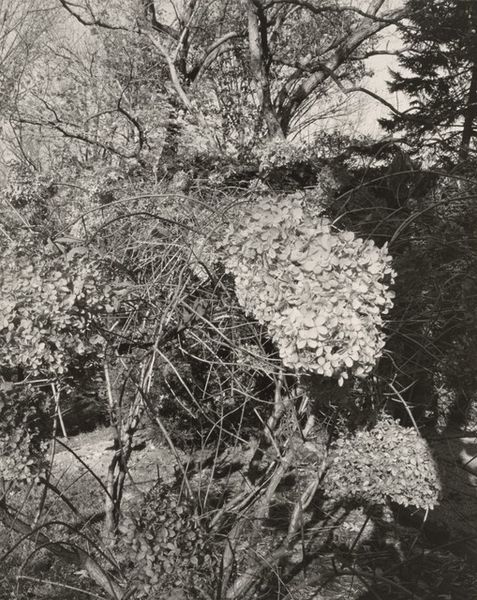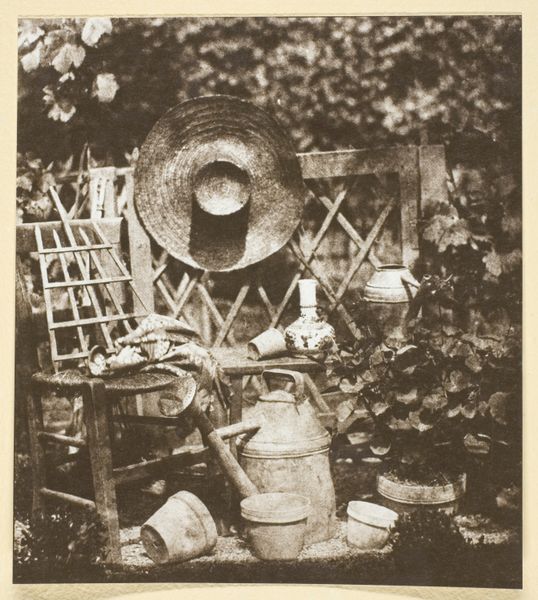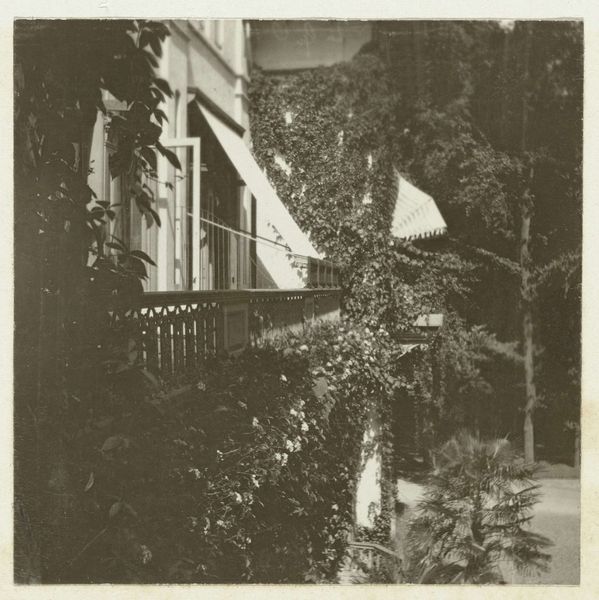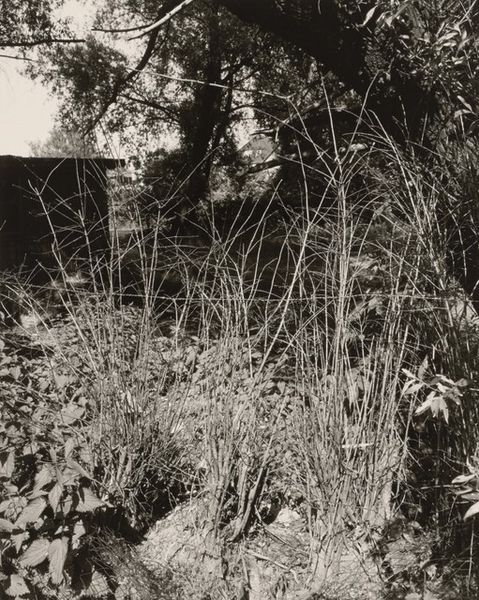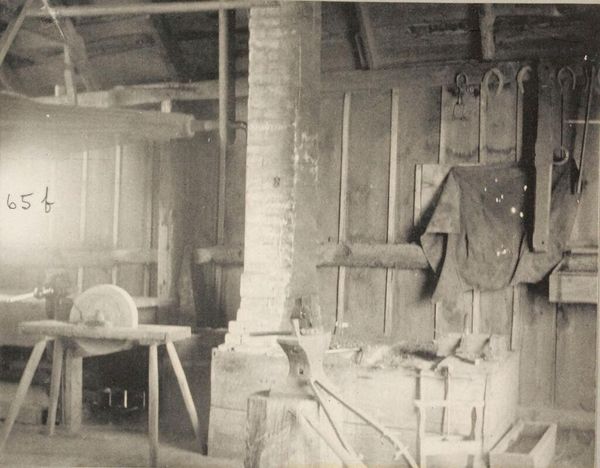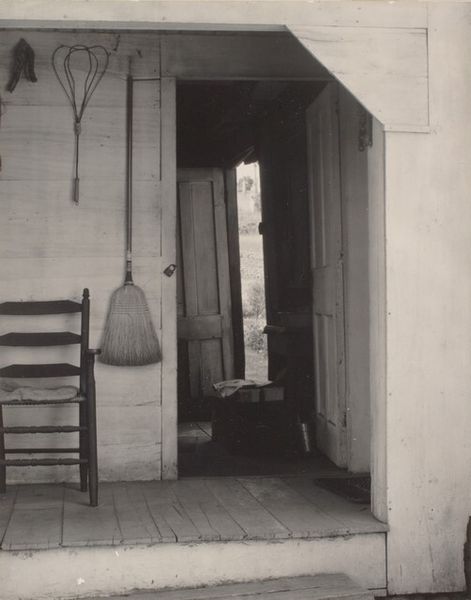
photography, gelatin-silver-print
#
contemporary
#
landscape
#
photography
#
gelatin-silver-print
#
monochrome
#
monochrome
Dimensions: image: 19.2 x 24.2 cm (7 9/16 x 9 1/2 in.) sheet: 36.6 x 36.4 cm (14 7/16 x 14 5/16 in.)
Copyright: National Gallery of Art: CC0 1.0
Curator: This compelling gelatin-silver print by Madoka Takagi is titled "Ellis Island 53." It dates to 1988, a time when the island's abandoned state was becoming a potent symbol. Editor: My immediate reaction is one of decay. The monochromatic palette lends itself to this feeling of desolation and almost picturesque ruin, these chairs overturned as if swept away in some unseen cataclysm. Curator: Indeed. Takagi’s work often delves into themes of memory and abandonment within institutional spaces. Her photography frequently documents spaces marked by historical and societal transitions. This particular image belongs to a broader series about Ellis Island and its historical function. Editor: The overturned chairs are a fascinating symbol. Aren’t chairs meant to represent stability, order, maybe even the rituals of civic life? Here, they become emblems of a broken promise, or perhaps, a dream deferred. Curator: Precisely. Ellis Island is a powerful symbol, standing for both the hope of a new beginning and the sometimes harsh realities of assimilation and exclusion in American society. It raises the question of whether these hopeful, striving, potential new Americans ever fully felt accommodated here. These abandoned chairs can embody those feelings of uprootedness. Editor: And the vegetation reclaiming the space! It’s like nature is asserting itself over this human enterprise, quietly consuming its structures. The plants are visually chaotic but contain hints of persistence. I find it somewhat poetic. Curator: Takagi’s choice of a gelatin-silver print emphasizes the historical texture. It creates an almost ghostly effect, blurring the boundaries between past and present. This highlights the temporal depth of Ellis Island. The place exists now mostly as memory and echoes of that past linger there. Editor: I agree. The photograph functions almost like a cultural reliquary here. I’m especially drawn to the stark contrast and sharp detail. It prevents the image from becoming merely melancholic, creating a tension and even an intriguing, subtle beauty amid the ruin. Curator: I think her lens captured the transitional atmosphere of a place wrestling with its own past, while hinting at questions about the future. Thank you for exploring the iconography with me. Editor: The pleasure was all mine. Thinking about its loaded imagery and historical associations has made me ponder our national identity and our ongoing dialogue with immigration today.
Comments
No comments
Be the first to comment and join the conversation on the ultimate creative platform.
